“This post contains affiliate links, and I will be compensated if you make a purchase after clicking on my links.”
One of the first things that any new welder learns is that whatever they’re welding, it should be grounded, and if you don’t have it grounded correctly, then your welding quality, your consumables, and your equipment will suffer in the long run.
Most commonly, welders are ground by using a clamp that is made of either brass or copper. Welders are ground so that the circuit is completed, and this allows the welder to strike an arc. When you don’t have a good ground, you don’t have a suitable circuit, and your welds are always going to be low-quality.
Clamp the ground as close to the welding zone as possible. The clamp needs good surface contact, free from debris and grease. Contact must be metal to metal. Clam and clamp cable must be in good working condition.
In the following article, we’re going to teach you everything there is to know about grounding and why it’s so important. By the end of the article, you should have a much clearer idea about how to ground your welder safely and effectively. We’ll cover the following topics:
- Why Would You Ground A Welder?
- What Happens To Your Weld Quality If You Have A Bad Ground?
- Different Types of Grounding
- How Do You Ground Your Welder?
- Where Do You Put the Ground While Welding?
- What Is The Best Ground Clamp For MIG Welders?
- FAQ About Grounding
1. Why Would You Ground A Welder?
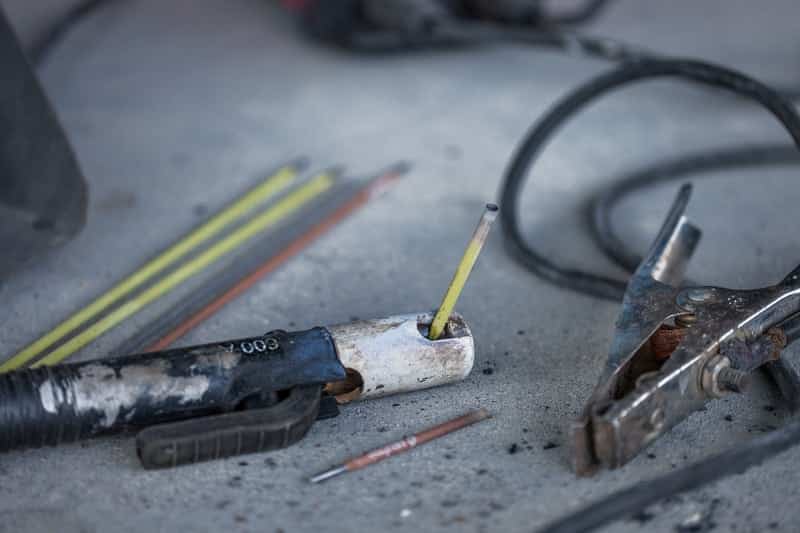
One of the main reasons that you would ground any electrical circuit is for safety, and it’s also one of the reasons that you would ground a welder. So maintaining correct grounding with your arc welding equipment is vital to safety in the workshop or at home.
Another essential reason to ground your welder is to improve the quality of your welds. This is because all of the current in your welder passes through your ground clamp. What this means is that if you don’t have a good connection, then the performance of the welder is hampered, and your overall welding quality will be low.
2. What Happens To Your Weld Quality If You Have A Bad Ground?
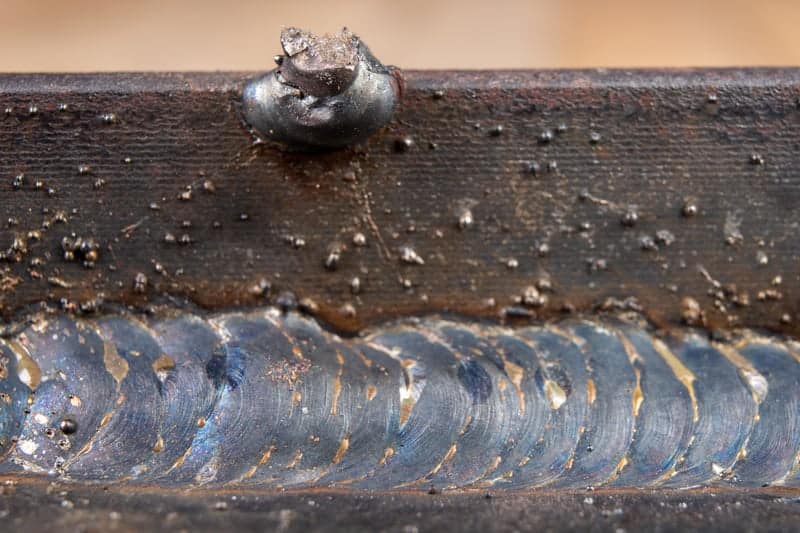
If your clamp is poorly maintained, not connected correctly, or inadequate, you’re going to end up with a percentage of your current leaking away or being too restricted while you’re welding, especially at high amps.
The poorly maintained or connected clamp leads to other issues like the clamp getting excessively hot while you’re welding which only works to accelerate the negative issues. If you have ever melted off a ground clamp or lead, it’s most likely because of the clamp. Simply upgrading to a higher-quality clamp could instantly improve the performance of your welder and improve your welds.
3. Different Types of Grounding
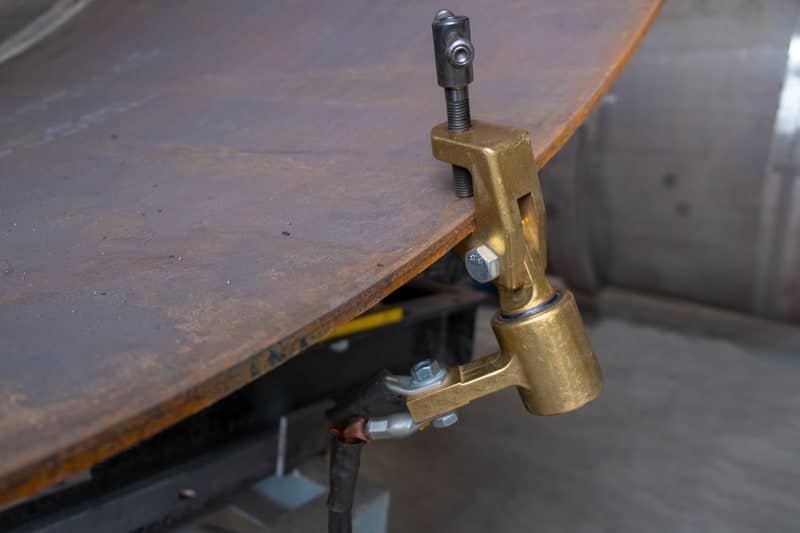
There are a variety of different types of grounding that you may encounter while you are welding. In the following section, we’ll cover some of the more common ways that your welding machine works with a grounding clamp to effectively ground your welder and complete the circuit when you are welding.
- Grounding Connectors – A lot of welding machines utilize a grounding setup that incorporates plugging a flexible cable into a specific outlet. While some are permanently wired in, this is exceptionally uncommon. When you connect the equipment to the ground, it makes it so that both have the same potential for energy and prevents you from being shocked if you touch both pins on the welder.
- Double Insulation – Some welding machines are designed with double insulation. They don’t require a grounding conductor because the added insulation protects you from being shocked.
- Grounding Pins in Plugs – Most smaller welding machines use a plug that’s on the end of the power cord. The machine is automatically grounded when it is plugged into the power. For this reason, you should never remove that pin or use any type of adapter with these welding machines.
- Test Circuits – Using a test circuit will check whether or not your ground is operating correctly. They are an affordable way to check that your machine is safely ground.
- Workpiece Grounding – Your welding circuit is made up entirely of conductive materials. The welding current for your project flows through this conductive material. They pass through the cables, terminals, connection, gun, torch, and the job that you are working on. This type of grounding would be connected directly to the workpiece or a metal table or metal building frames that your project is sitting on.
- High-Frequency Grounding – Some machines, such as TIG machines, will start and stabilize welding currents with high-frequency voltage. However, the high-frequency signals expand away from the welding area and can interfere with electronics in the surrounding area.
- Portable Welding Machines and Vehicle-Mounted – It’s essential to ensure that you ground all parts of your welder when operating out of a truck using a generator for remote welding. They should all be properly grounded as per the manufacturer’s recommendations.
4. How Do You Ground Your Welder?
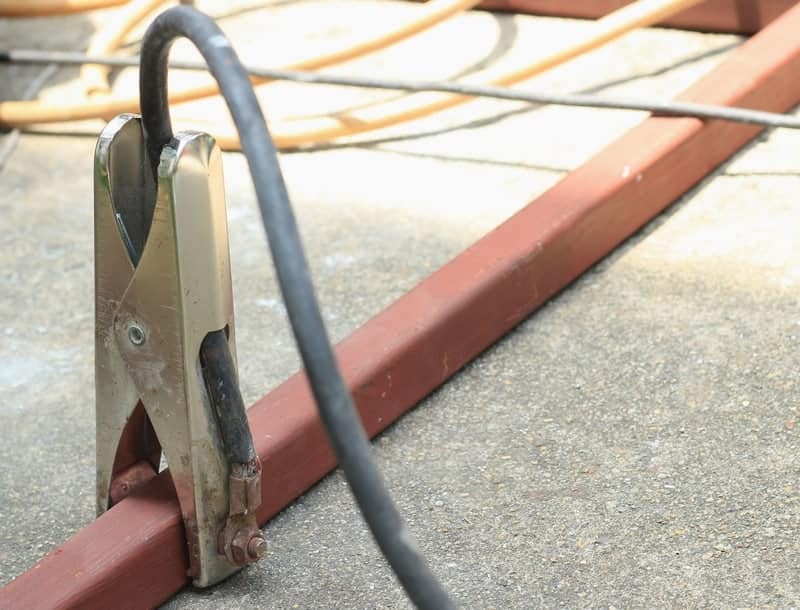
Grounding your welder is as simple as placing your ground clamp onto the workpiece. It’s always a good idea to clamp the ground on to clean metal and as close to where you are welding as possible.
Inside most clamps, there is a grounding strap that connects to a lug. Once that contact plate has burned through, the clamp won’t be as effective, and you will need to replace your clamp. Some of the larger clamps are made entirely of conductive material with a spring-loaded jaw to help with connectivity.
If you are lucky enough to be working from a metal bench, you can clamp your ground directly to the bench somewhere clean and out of the way. Just be sure not to lean against the clamp while you’re welding, or you are likely to get a shock!
5. Where Do You Put the Ground While Welding?
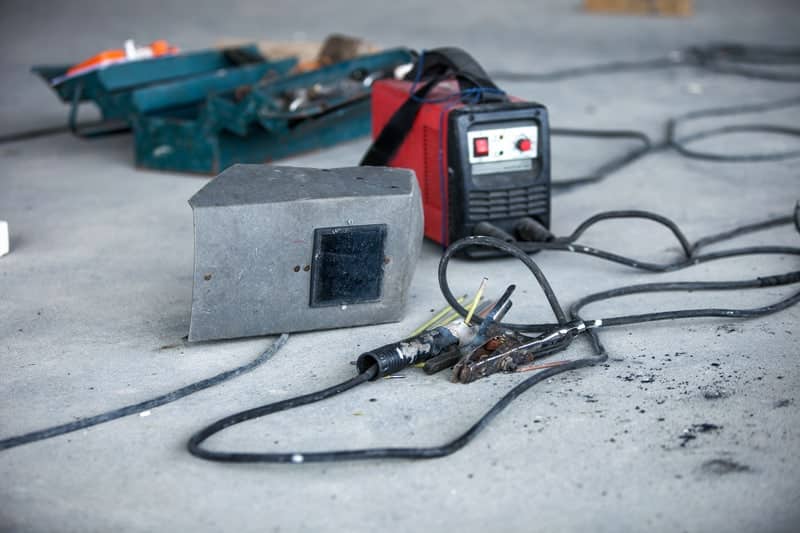
One thing that every welder should know is where to put their ground clamp while they are welding. The clamp should always be attached to the project that you are welding whenever possible. The closer you can get it to where you are welding, the better it is for the quality of your welds.
It’s important to remember that your clamp should be placed on clean material, not material that is rusty or covered in paint. If you can, sanding a small part of the metal to clean it up before placing your clamp is a great idea to get a good connection.
If you are welding on a car, it’s a good idea to disconnect the battery before welding and always avoid clamping directly to the wheels as it can damage the wheel bearings. MIG welding is one of the safest ways to weld on a car.
6. What Is The Best Ground Clamp For MIG Welders?
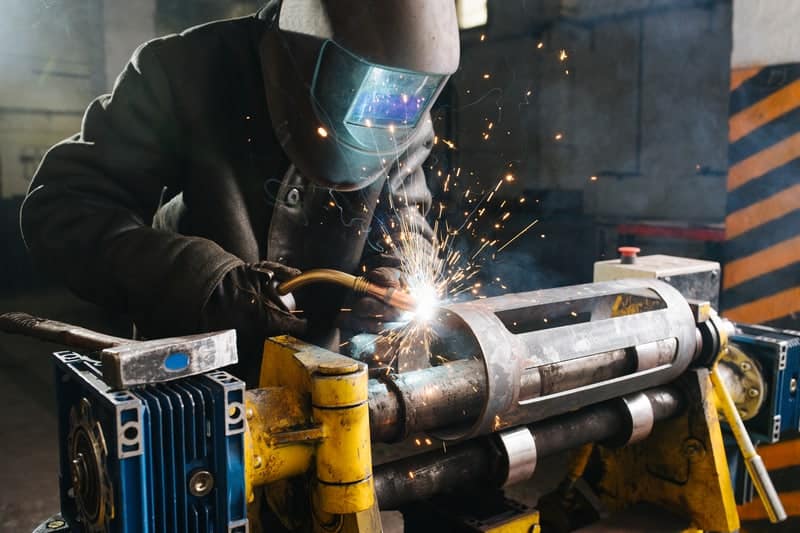
Most experienced welders recommend that you use a copper clamp. They’re a safe and convenient way to get an effective ground, and copper is highly conductive while also having low corrosion levels. Although your welder usually comes with a ground clamp when you purchase it, upgrading your ground clamp is a great investment.
7. FAQ About Grounding
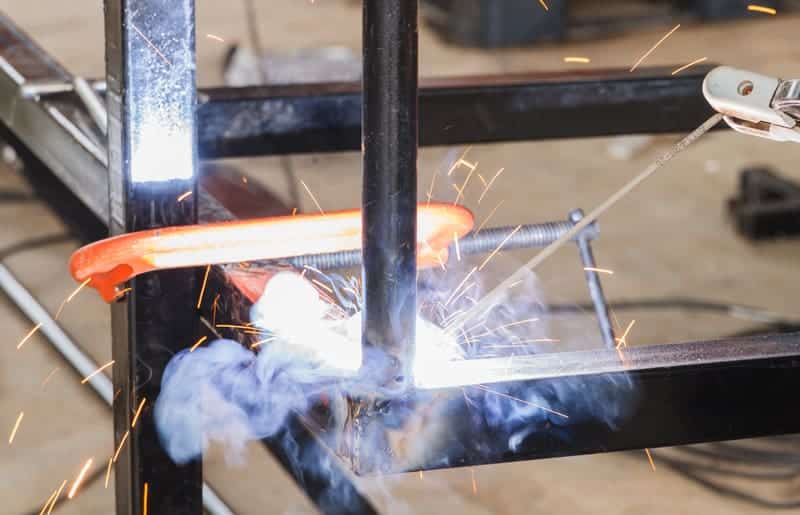
We know that you probably have a lot of questions about grounding your welder and the different kinds of problems that you may encounter. In this section, we’ll answer some of the more frequently asked questions that you may have about grounding your welder or workpiece.
Can you get shocked by your welder?
Yes, your welder can give you a shock and with a large amount of electricity. However, you can greatly reduce the chances of being shocked by grounding your welder correctly. Electricity will always take the path of least resistance. Avoid touching your tip or electrode while you are also touching the workpiece. It’s also a good idea to make sure that there is no standing water around your welder or where you are welding.
Another effective way to reduce your chances of being shocked while you are welding is by doing regular maintenance and servicing of all your welding equipment, including getting all the cables checked.
If you do get a shock when welding, you should immediately consult with a medical professional even if you are feeling well. Electric shocks can cause unseen damage which can only be detected by specialized medical equipment. The good news is that it’s extremely rare to receive fatal injuries from being shocked by their welder. If you follow all safety procedures carefully, you should be safe while you are welding.
Is the ground on a welder positive or negative?
Determining which polarity your welder is operating at is done by looking at the cables attached to the front of your welder. Your welding torch is usually attached to either the positive or negative, and the earth lead is attached to the other. This doesn’t influence the ground on your welder.
It’s important to note that the work lead itself doesn’t have anything to do with grounding anything and that your welder is grounded usually through the power cable. Your work leads are what comes out of the front of the welder and connect to the positive and negative studs; your ground is coming from either a separate ground cable or when you plug your welder into the power source.
Brass or Copper Ground Clamp, Which Is Best?
The two best materials for your ground clamp to be made out of are copper and brass. While some older welding machines may use a zinc clamp (because of its low cost), the zinc isn’t as strong as either brass or copper and regularly breaks or cracks, and isn’t very resistant to corrosion, especially in marine applications. It’s because of this that brass and copper are the most widely used, but which one is best?
Copper is the most widely used material for earth or ground clamps because it’s more conductive than brass. You could also use silver, but it’s far too expensive and unnecessary. Despite this, you’re still going to see a lot of welders with brass clamps. Many welding clamps are made out of steel or brass with copper plating or coating. Copper has good conductivity, good resistance to corrosion, and is affordable, which is why it’s the best choice.
How To Correctly Ground In Welding! – Conclusion
Hopefully, after reading this article, you now have a much clearer idea about what a ground is and the difference between a ground and earth, how to get a good ground on your welder, and the best way to ground your welding machine when welding.
A high-quality grounding clamp will improve the quality of your welds and make welding much more pleasurable. The less things you have going wrong, the more you’ll be able to concentrate on getting your welder’s settings right. Not only that but having a good ground on your welding machine will also ensure that you are as safe as possible.
The great thing about grounding clamps is once you know how they work, they are extremely easy to use. Always make sure that you have a good clean piece of material to clamp on to. If you are working with old material or heavily painted material, you should also clean a small area of the project to ensure that you are getting the best ground possible.
Once you have mastered the art of grounding and work leads, you will be in a much better position to lay down some premium welds, and best of all, you’ll be doing it in a much safer way. Always carefully read the manual on your welding machine prior to use as it could be different from what you are used to, and it always pays to be safe rather than sorry when it comes to electricity.
If you have any tips for grounding your welder or have a brand of earth clamp that you would like to recommend to other welders, then don’t hesitate to contact me directly. We’d love to share your information with other less experienced welders.



